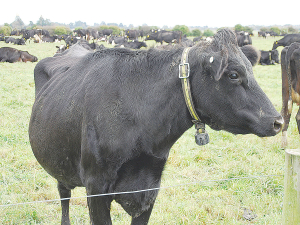Low-footprint feed drives high-profit, low-emissions dairy
The key to a dairy system that generates high profit with a low emissions intensity is using low footprint feed, says Fonterra program manager on-farm excellence, Louise Cook.
 Lincoln University Dairy Farm is expanding research to include variable milking frequency, moving the forage base to include plantain, and replacement rate reduction.
Lincoln University Dairy Farm is expanding research to include variable milking frequency, moving the forage base to include plantain, and replacement rate reduction.
Three new farming systems are being implemented to expand Lincoln University Dairy Farm’s (LUDF) focus and extend its outlook through to 2030.
The research is on variable milking frequency, moving the forage base to include plantain, and replacement rate reduction.
The South Island Dairying Demonstration Centre (SIDDC) has revised LUDF farm systems to more effectively contribute to New Zealand dairying and the wider primary sector.
Lincoln University deputy vicechancellor Professor Grant Edwards says SIDDC is committed to taking a leadership role in dairy farming in New Zealand through LUDF.
“It’s important that the partnership regularly reassesses and revisits the farm’s systems to consolidate its position at the vanguard of current and future scenarios.”
DairyNZ general manager for new systems and competitiveness, Dr David McCall, says New Zealand’s dairy sector is committed to remaining the most sustainable milk producers.
“As a SIDDC partner, we support LUDF implementing new farm systems. It is also exciting to see the adoption of variable milking frequencies, following DairyNZ’s three-year flexible milking project which highlighted the opportunities this system presents farmers.”
The variable milking programme will be implemented in the 2021/22 season and involves moving from the traditional twice-a-day milking to a more flexible milking regime with ten milkings over the course of a week.
SIDDC demonstration manager Jeremy Savage says there are many benefits to variable milking.
“A variable milking programme will not only improve cow welfare through less lameness, better overall health condition and enhanced vigour, but will also lift the safety and wellbeing of staff, with kinder rosters, fewer early starts and more condensed workloads allowing for better work/life balance,” he says.
Additionally, Savage says that starting in October 2021, LUDF will plant at least 10% of the farm into plantain each year.
“This is a forage that may significantly reduce nitrogen leaching. With cow intakes of 30% plantain or higher we anticipate LUDF will achieve further improvements to its nitrogen leaching results,” he says.
He says the potential benefits of reducing on-farm nitrogen leaching by up to 20% by managing cows’ diets are ‘obvious’ and ‘compelling’.
In introducing plantain, LUDF is applying research from the Forages for Reduced Nitrate Leaching (FRNL) project, a six-year cross-sector programme that looked at ways in which forages can reduce nitrate leaching.
|
A landmark moment for New Zealand. That's how Prime Minister Christopher Luxon describes the conclusion of negotiations for an India-New Zealand Free Trade Agreement. Beef Progeny Test 2025: Genetic insights for NZ beef industryAt Pāmu’s Kepler Farm in Manapouri, mating has wrapped up at the across-breed Beef Progeny Test. HortNZ celebrates 20 YearsMore than 150 people turned up at Parliament recently to celebrate the 20th anniversary of Horticulture New Zealand (HortNZ). Biosecurity NZ urges vigilance for yellow-legged hornetsBiosecurity New Zealand says Kiwis should continue to keep an eye out for yellow-legged hornets (Vespa velutina) over the holiday season. Mental Health and Fitness Unite: The Push-Up Challenge comes to New ZealandThe Push-Up Challenge, an event which combines mental health and fitness, is set to launch in New Zealand in 2026. Agritechnica 2025: Claas, Fendt and Valtra claim 2026 Tractor of the Year AwardsLast month's Agritechnica event led to a wide group of manufacturers celebrating successes when the 2026 Tractor of the Year Competition winners, selected by a panel of European journalists, were announced in Hanover Germany. NationalFonterra capital return could boost GDP – ANZ ReportThe Fonterra divestment capital return should provide “a tailwind to GDP growth” next year, according to a new ANZ NZ report,…Fonterra upgrades Eltham cheese production for global growthFonterra's Eltham site in Taranaki is stepping up its global impact with an upgrade to its processed cheese production lines,…Michelle Pye elected to Fonterra boardCanterbury farmer Michelle Pye has been elected to Fonterra’s board for a three-year term.Government plan to scrap regional councils faces criticismGovernment plans to get rid of regional councillors shows a lack of understanding of the fundamental problem affecting all of…Lactose to join fat and protein in Fonterra milk price modelFor over 20 years, Whakatane farmer Gerard Van Beek has been attending Fonterra annual general meetings with the same message…Machinery & ProductsCase IH Unveils New RB6 Round Balers & 2026 Square Baler UpgradesCase IH has released details of its all-new round balers and redesigns to its large square balers aimed at increasing…How to Improve Milking Efficiency in Swing-Over Herringbone ShedsThe swing-over herringbone is the most common dairy type in New Zealand, used on 69% of dairy farms. Simple changes…Claas Jaguar 1000 Series sets new forage harvesting world recordThe recently released Claas Jaguar 1000 Series has seen its flagship 1200 set a new official Guiness World Record in…CB Norwood appoints John Skurr as new general managerCB Norwood Distributors Limited has announced the appointment of John Skurr to the position of general manager.AIMER, Bovonic and Herd-i join forces to advance NZ dairy techThree New Zealand agritech companies are set to join forces to help unlock the full potential of technology.» Latest Print Issues OnlineMilking ItTrump's tariffsPresident Donald Trump’s decision to impose tariffs on imports into the US is doing good things for global trade, according… Tanker on the rollSeen a giant cheese roll rolling along Southland’s roads? » eNewsletter |